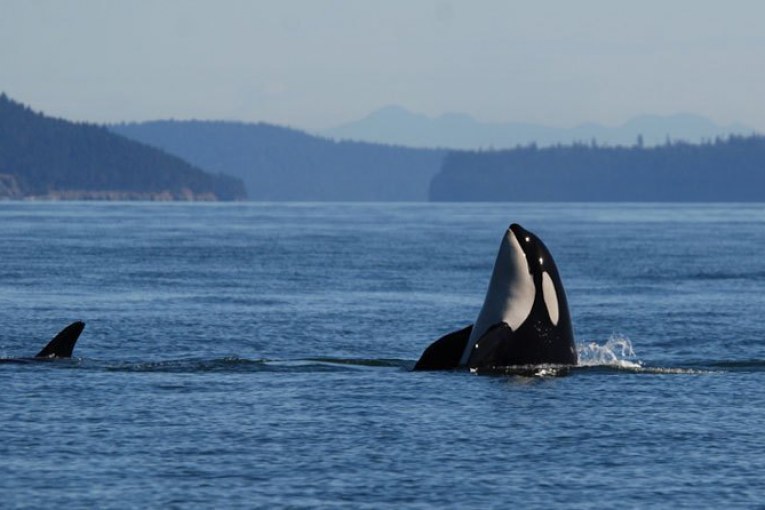

Karen C. Drayer Wildlife Health Center, Davis
By Jerika L.H.
For the past two decades, UC Davis veterinarians have been stationed on Orcas Island, an outpost of the UC Davis Karen C. Drayer Wildlife Health Center. Rallying behind their logo, “People and Science Helping the Sea,” the SeaDoc Society scouts the waters and marine life between British Columbia and Washington, known as the Salish Sea. Their research, sponsored by the UCD Karen C. Drayer Wildlife Health Center, seeks out information on healthy wildlife and ecosystems. Their current endeavor involves tracking the personal health records for every orca whale in the area.
Orcas Island is home to three different types of killer whales: southern resident orcas who eat salmon, transient orcas who eat marine mammals, and offshore orcas who eat sharks. While these whales look the same to the untrained eye, specialists have pinpointed differences between the populations. UC Davis veterinarian Joe Gaydos explains, “The southern resident whales are listed as endangered, so the [SeaDoc] group is interested in what ways we can speed up and help with their recovery. There are only 84 southern whales left. We have lots of information on them, but the records are not centralized. Unfortunately, specialists cannot access them and look at specific information about the animal’s health and history. This new database will be organized by distinct individual animals and will also capture trends. The data can help us in understanding how animals die, how they got stranded or beached, help us learn how diseases spread, and how breeding, migration, and eating patterns have changed. It will be extremely useful.”
The idea was taken from the UCD GorillaDocs project, a group that provides vet care and monitoring of free range mountain gorillas, of which there are only 800 left in the wild. Their research has shown that populations who are habituated and have vet care grow as a result of animal-specific knowledge. The SeaDoc group hopes this will be the same outcome for the orca whales.
The health and wellness of orcas has become a widespread issue amidst the current SeaWorld controversy, which gained a worldwide audience after the release of the 2013 documentary, Blackfish. The causes behind a drop in killer whale numbers are multiple.
Historically, orcas were collected for aquarium trade in the 1920s and 30s, which drastically altered their populations. Many died from captivity and capture-related issues. Presently, food availability is the most predominant concern. The southern resident orcas eat chinook salmon, which unfortunately is becoming more and more limited. Salmon are in decline for four main reasons: overfishing, hatchery competition, hydroelectric dams that block river flow, and habitat loss. In short, an endangered species eating an endangered species is a deadly combination if not intervened upon. Additionally, high levels of PCB (polychlorinated biphenyl, legacy chemicals dumped in the water in the 1940s and 1950s) are rampant in ocean waters and take a long time to get out of the system. Orcas eat animals saturated with PCBs and the chemical becomes stored in their blubber. When they have a baby, the contaminant is offloaded onto their offspring. The PCB reacts with their already compromised immune system and makes them more susceptible to illness and, ultimately, death.
High levels of underwater noise is also a growing concern for these marine giants. Their echolocation depends on hearing in order to communicate effectively for hunting. Watercraft traffic is increasing over the decades and contributing to a less than ideal ecosystem for many marine wildlife, including killer whales.
For those of you wondering, “What can I do to help?” DVM Gaydos points out that the recovery of salmon populations is integral in sustaining and strengthening orcas, and is something that can start at home. Water conservation is one of the biggest aids in helping replenish salmon. Water we don’t use goes over the dams and back to the rivers. Thus, making sure our water is clean is also another part of the equation. Copper and zinc from our daily garbage hurts salmon tremendously, which goes up the food chain and can devastate the health of their predators. Choosing not to eat salmon outright, or choosing to only eat pink or chum salmon is the biggest contribution one can make.
For more information on the orca whales project, or to find out how to contribute, visit http://www.seadocsociety.org/
Nice article on our connectedness Jerika. I would like to see more coverage of current UCD projects.